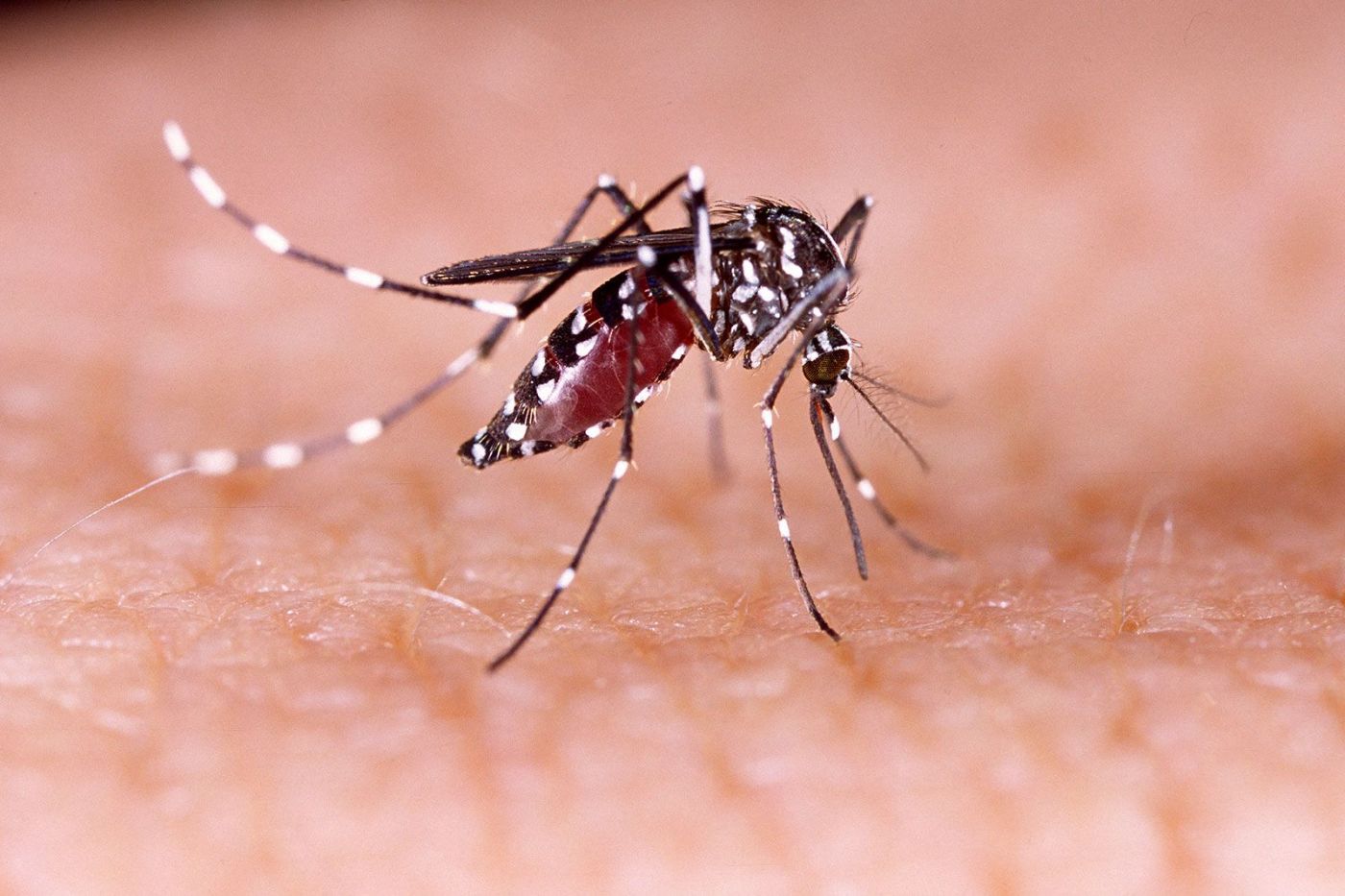
First invasive mosquitoes of 2025 found in South San Jose neighborhood
SAN JOSE – Santa Clara County public health officials are advising residents to “dump, drain and clean” any still water from their yards after detecting the first instance of an invasive mosquito species this year.
The Aedes aegypti mosquito was detected in the Santa Teresa neighborhood of South San Jose, where two adult mosquitoes were trapped — meaning that the species survived the winter after they were found last year, county public health officials said at a news conference Thursday.
“This mosquito is tiny, but it has a massive impact to the community and the health of our community,” said Edgar Nolasco, director of the County of Santa Clara Consumer and Environmental Protection Agency, at the press conference. “There’s a day-biting mosquito, highly aggressive in nature and it has the capability of transmitting diseases such as Zika, chikungunya, dengue and yellow fever.”
The return of the mosquitoes marks an “inflection point” of whether the pest will be able to remain in the community and spread disease, said Dr. Sarah Rudman, acting health officer and director of the Public Health Department, said at the news conference.
Last year, the county trapped 388 invasive mosquitoes in six locations in San Jose, Santa Clara and Gilroy, officials said in a press release. The mosquitoes, which originated in Africa and can also be found in South America, are about a quarter-inch in size and have black and white stripes on their backs and legs. They generally only travel within 500 feet of where they hatch, and they feed “almost exclusively” on humans.
The species has become established — meaning it has a self-sustaining population — in 22 counties across California, primarily in the southern and central parts of the state, officials said.
In order to combat the species’ continuing presence, the county is increasing its monitoring and surveillance team, putting more traps in areas where the mosquitoes are spotted, increasing community outreach and conducting more door to door inspections, said Dr. Nayer Zahiri, manager of the Vector Control District, at the news conference. She added that the county is also working with other vector control districts that are dealing with the same invasive mosquito.
“The threat of this dangerous mosquito is growing,” Zahiri said. “This is the second year in a row we have found the day-biting mosquito in the Santa Teresa neighborhood of South San Jose.”
Zahiri added that the fact that the mosquitoes have been found for a second year in a row “means it is becoming more likely that this mosquito is here to stay.”
The viruses the mosquitoes spread are not native to the area but pose a health risk to the community, Nolasco added.
Rudman added that the risk of someone in Santa Clara County contracting an illness like Zika or dengue fever from a mosquito is still “effectively zero” because the mosquito would first have to bite someone who carried the disease. But she noted that the number of people contracting these diseases outside of the county then returning has increased: in 2020, seven cases of dengue traveled into the county, but in 2024, that number rose to almost 50 cases.
“What’s changing now is if this invasive mosquito become endemic here, eventually these diseases will spread here at home, causing severe risk, including risk of death to certain populations,” Rudman said.
Nolasco said that the early detection of the invasive mosquitoes allows the county to possibly control its spread.
The mosquitoes can breed in standing water, so public health officials are asking that county residents allow vector control technicians to provide free inspections and advice, Nolasco said. Residents should report any mosquitoes they see, and they should ensure that they dump, drain and clean any containers with standing water in yards, Zahiri said. The county’s emergency alert system will also send out notifications about mosquito sightings and treatements happening in specific neighborhoods, officials said.
Related Articles
AMBER Alert pulled after San Jose girl returns home
Opinion: Palo Alto’s Caltrain is ‘a gun running through the city’
Molten material from idle Southern California Edison tower triggered Eaton fire, attorney alleges
Early morning Oakland shooting leaves man dead
Morgan Hill police shoot man after apparent disturbance at Safeway
To effectively clean out containers that held standing water, officials recommend scrubbing them with hot, soapy water or a diluted bleach solution, according to a press release from the Vector Control District. The eggs appear like tiny bits of dirt to the naked eye and are about half a millimeter in size. Outdoor water containers that should be cleaned include bird baths and pet dishes.
“The community is our first line of defense,” Nolasco said. “Let’s protect our community, our health and our quality of life.”
Any sightings of day-biting mosquitoes should be reported to the Vector Control District at (408) 918-4770 or vectorinfo@cep.sccgov.org.
Related Posts

Man who allegedly attacked rapper Tory Lanez in California prison has previous conviction for assault on inmate

California prosecutors unseal first ever narco-terrorism indictment against Mexican drug traffickers
